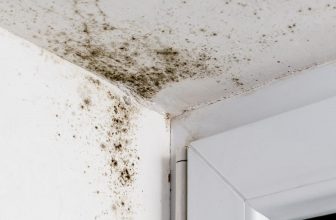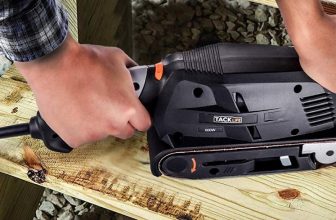If there’s one thing that every person can agree on, it’s the fact that nobody enjoys having pests in their home. It doesn’t matter if its insects such as cockroaches, mosquitoes, and fleas, or vermin such as mice and rats—nobody wants them in their home. That’s why we’ve decided to give our readers some practical advice that will help them keep their homes as pest-free as possible. In this guide, we’ll cover preventative measures that the homeowner can use to prevent these pests from entering their home, as well as measures that can be taken if these pests do make it into their home.
Step One: Add Screens To Your Home
One of the best things that a homeowner can do to keep out flying pests is to add screens to their doors and windows, During the heat of summer, everyone wants to open their windows to let in some fresh air, but not everyone keeps a screen in them. And that allows a variety of flying insects to get into the home—flying insects that include flies, mosquitoes, moths, and wasps.
Keeping a screen in the window or front of the door isn’t going to do much good, however, if that screen is damaged in some way. That’s why repairing them should be a top priority. Small holes can be sealed by pushing the broken wires back into place and then using clear nail polish to seal it, or the window can be re-splined if it’s completely damaged. Either way, be sure to get those screens in good working condition to keep those pests out.
Step Two: Keep Your Doors Properly Sealed
The next step to keeping pests out of your home is to make sure the biggest entryway into your home seals properly. If there’s too much of a gap underneath or around the door, insects can easily slip into the home. That’s why homeowners should make sure there’s proper weatherstripping around the door and that there’s an aluminum threshold properly installed at the bottom of the door. Once all that’s done, just be sure to not leave the door open or all of your efforts will be in vain.
Step Three: Seal Cracks & Crevices
Another way to keep pests out of your home is by sealing the cracks and crevices that are on the outside of your home. This means using mortar or cement to fix problems with foundations and walls, replacing damaged sections of siding, and replacing rotted trim. It also means using a high-quality caulk to seal off cracks. Make sure to use caulk around window and door frames, as well as around air intakes and/or dryer exhausts.
Step Four: Keep Your Yard In Good Condition
Most home pest problems begin with the person’s exterior spaces. If the homeowner doesn’t properly take care of their yard, then they can end up encouraging mosquitoes, spiders, and even mice. These pests will then begin to move from the yard and into the home, so it’s best to take care of your yard work to prevent that from happening.
Proper yard maintenance means making sure that there aren’t pools of rancid water, that brush and other debris are removed from the property, and that the grass is cut. It’s also a good idea to keep gutters and other drainage methods clean so that they work well. Piles of wood, leaves and other brush can create the perfect hiding space for breeding rodents, so be sure to eliminate those as soon as possible.

Step Five: Keep Your Home’s Interior Free Of Clutter
It’s also a good idea to not only regularly clean your home, but also make sure that there isn’t a whole lot of clutter. Piles of magazines or newspapers can hide insect infestations and allow them to get out of hand before the homeowner has a chance to deal with them.
It’s also a good idea to make sure that there isn’t water available for rodents and insects around your sinks, and that you keep all of your food in airtight containers to keep insects and rodents from using them to keep themselves alive.
Step Six: Grow Plants That Repel Insects
There are a variety of different plants that insects don’t like and by planting them strategically around the property, you can reduce the chance of those insects hanging around. Below is a shortlist of some of the plants and the insects they repel listed below.
- Basil: Repels Mosquitoes & House Flies
- Lavender: Repels Mosquitoes, Fleas, Moths & Flies
- Lemon Thyme: Repels Mosquitoes
- Lemongrass: Repels Mosquitoes
- Mint: Repels Mosquitoes
- Sage & Rosemary: Repels Mosquitoes & Other Biting Insects
- Fennel: Repels Slugs & Snails
- Thyme: Repels Whiteflies
Along with the insect-repelling plants, the homeowner can also use bird feeders to draw birds to their yard. Why would they do that? Because birds are natural predators that eat insects and their mere presence in your yard will lower insect populations dramatically.
Step Seven: Use Proven Insect & Rodent Control Measures
Even if all of the above techniques are successful, there might still be insects or rodents that make it into the house. In those instances, the homeowner has no choice but to use measures that take care of the matter altogether. This includes deploying flytraps or flypaper around the home and using the best mouse traps that you can buy. For ant infestations, a liquid ant killer such as Terro works extremely well and will usually eliminate the problem within a couple of days.
To Sum Up…
It’s pretty easy to see that there isn’t just one solution that will keep your home clear of insects and rodents. It takes keeping up on regular household maintenance, keeping the interior and exterior of the home free of debris, and using the best control methods around to keep these pests at bay. But if the homeowner applies all of these measures consistently, then they will be able to reap the rewards of a pest-free home. Nobody wants to have pests in their home, and by taking a few simple steps, they don’t have to deal with them at all.





